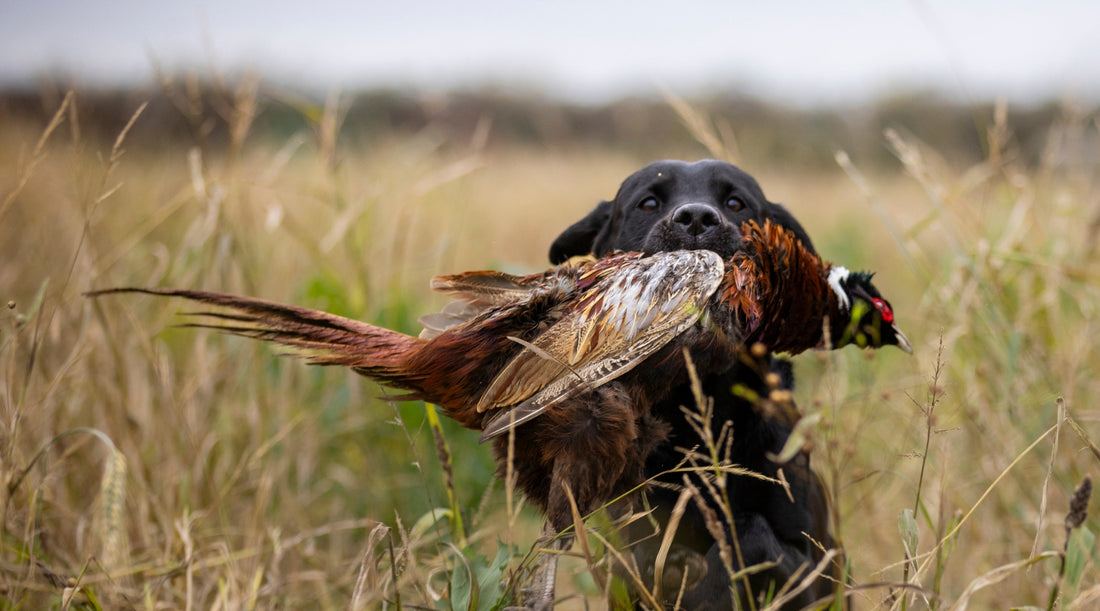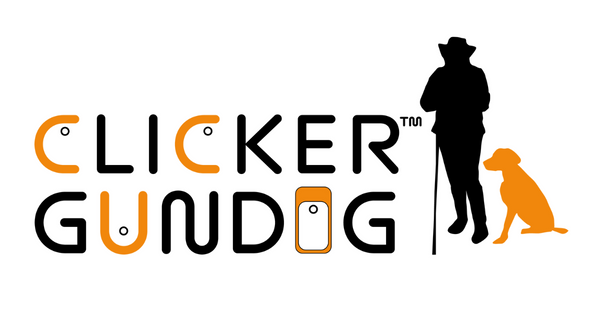
Gundog fitness: Preventing injuries this shooting season
When considering whether our gundogs are ready for the shooting season, it’s easy to cast our minds to all the training, spending the last few weeks brushing up on our stop whistle and steadiness.
But we also need to consider our gundogs’ fitness and shoot day routines if we are to reduce the risk of injury and keep our dogs healthy for a lifetime of beating and picking up.
There are plenty of discussions about how to get a gundog “fit” for the working season head. Suggestions include turning the daily walk into a daily jog, putting out lots of long memory retrieves, or encouraging lengthy swimming sessions.
These extreme, high-impact, and intensive bursts of exercise might help our gundogs' strength, endurance, and cardiovascular fitness levels, but they don’t take into account the true nature of the sport.
Gundogs work intermittently throughout the day. Beating and picking up dogs will often go from a static behaviour and potentially lots of waiting around, to hunting and running at full throttle through challenging terrain featuring additional obstacles like ditches, log piles, brambles and jumps.
While we do need them to be able to work for long durations safely without worrying about them collapsing, too often, gundog fitness focuses solely on this without taking into consideration if our gundogs’ bodies are prepared and fully warmed up for the intense activity.
In this gundog fitness blog, we look at how our gundogs move, why they sustain injuries and what we can do to protect their long-term health and ensure they are injury-free throughout the season to prolong their working careers.

Understanding how our gundogs move
Before we look at fitness and preventing injuries, we need to have a basic understanding of how our gundogs move.
A gundog's movement is based on the interaction between their muscle and skeletal systems. Simultaneously, sensory receptors are constantly adapting to environmental feedback to ensure that balance and stability of movement are maintained, no matter what obstacles or forces there are.
Imagine that while running across a field to retrieve a dummy, the surface beneath our gundog switches from a harder, dry soil to a wetter, boggier surface.
This changes the forces sustained through the limbs. The sensory receptors in the body have to report this information back to the brain to ensure that the body alters the recruitment of different stiffening or bracing levels and adapts the dog’s movements to minimise the impact of these forces.
We also need to understand that when walking, our gundog’s body weight (irrespective of their breed) is unequally distributed, with more weight being distributed forward to the forelimbs 60:40, front to back.
These forces increase further when the dog moves faster in trot and gallop. When we also factor in that our gundogs are travelling over uneven ground, while carrying a dummy or game bird, we need to remember that this additional force has an additional burden on the body.
Movement is a learnt behaviour. It is developed in response to training and establishing connections between the muscles and the nervous system, allowing the correct muscles to be activated at the correct time in order and sequence at the correct speed.
One of the first things we can do to make sure our gundogs are fit enough for work and unlikely to sustain injury is to develop body awareness, coordination and proprioceptive skills early on while gradually establishing suitable conditioning protocols to influence and build confidence over the different types of terrain we wish gundogs to negotiate in the future.

The main reason gundogs get injured on a shoot day
Conformation, age, and overall fitness of an individual dog may predispose it to a higher risk of injury when out working, but one of the biggest problems that handlers face is that working dogs have a tendency to hide their physical and mental fatigue.
Just like when we are tired, mental fatigue can easily lead to poor decisions while physical fatigue can cause the body to make careless or clumsy mistakes.
Being observant with your gundog when you are working or training them will help you notice if their performance is lagging and can predict and highlight that they might be more at risk of injury.
Some of the signs you might notice that would indicate your gundog is pushing its limit include excessive panting, an elevated heart rate, trembling muscles, a spade-shaped tongue, changes in gait (such as shortening of stride or a change of pace), self-regulating breaks by sitting or lying down more often, or when nearing the end of a day, and they may even start to appear stiff or stilted while moving.
If your dog has reached their peak, you will need to ensure they are well rested to prevent further injuries related to muscle fatigue.

Why gundogs need plenty of rest
Due to the strenuous workload a gundog undertakes on a shoot day, it's vital that you provide adequate rest periods if your dog has been working intensively.
In human exercise, the idea is to do strengthening exercises for a particular group of muscles (i.e. legs), then leaving approximately a 72 hour rest period to recover, before exercising this group of muscles again.
Working a dog on a shoot for the entire day, however, will have an overall effect on several muscle groups. Depending on the individual dog, the way they move and their role, one group of muscles may also have been worked in excess when compared to others and some muscle fatigue will therefore probably occur.
When muscles are fatigued, the muscle fibres become inflamed from being overworked. They need time to recover and rebuild themselves before they can be productively stressed again. If inadequate rest is given, this can lead to muscular injuries and long term diminished performance.
If you notice long term performance variance, your gundog might actually be in pain, with some inflammation present. In gundogs this may be seen by a sudden lack of motivation to retrieve, knocking limbs on obstacles, change of jumping style or reluctance to jump, stiffness after a period of rest, dropping dummies, or just a change in their enthusiasm or focus.
Gundogs, particularly the high drive dogs who are eager to keep working, will start to off-load any areas of pain or discomfort. They will often start to compensate using other muscles which can change their overall movement pattern and start to create longer term effects to the tissues.
Planning down time, rest and periods of settling will also prevent our gundogs from becoming addicted to exercise, something which is often seen in human athletes as endorphins are released.

How to minimise injury while working our gundogs
There are several things that can be done to reduce risks of injury as well as keep our gundogs in great condition, which in turn may help to extend their working life.
Warm up
Warming up prior to exercise is really important. You wouldn’t see Mo Farah setting off for a marathon or Usain Bolt doing a quick 100m if they hadn’t properly warmed up – that’s because they would be far more prone to injury and are unlikely to perform as well.
It is the same for our gundogs.
Whether you are waiting for the first drive on the shoot to begin, or are in a group training session waiting for your turn, we need to make sure that our dog is physically prepared for the activity ahead.
Warming up the muscle tissues prior to a sudden burst of exertion will prevent tears or tendon and ligament injuries. This is because muscles are ‘thermodynamic’ and much better at stretching when they’re warm.
It doesn’t have to be complicated and you certainly don’t need to start teaching your dog the canine equivalent of lunges or leg stretches.
Examples of this might be some slow lead walking (not jogging or trotting, just walking), along with some short repetitions of sit to stand, weaves, and lateral bends.
Each dog should be warmed up individually to its requirements. On a brisk shoot morning in December, you might need to do ten minutes or more to make sure your dog’s muscles are warming up and getting ready to work.
Cool down
Cooling down is just as important as warming up. If your dog has been working at speed, try to make sure they don’t suddenly stop moving. Instead, walk for around ten minutes or so when you have finished.
If you’re out shooting for the day and there’s a lot of stop-start action, try to consider how you can maintain gentle movement in between drives, so they don’t stiffen up.
You might want to invest in some drying coats as keeping them dry and warm while resting between sessions, and at the end of a day, will also help to protect your dog’s musculoskeletal structure.
As for stretching, it is also always worth engaging the services of your local veterinary physiotherapist who can show you some appropriate exercises that you can do with your dog as part of a cool down routine.
Conditioning programmes
If you intend to go beating or picking up, it is vital to ensure that your gundog has the fitness to cope with the demands of the day. Preparing their bodies through regular training and conditioning programmes will support their readiness for the season ahead.
Each individual dog will have a conformation personal to them and obviously their age, fitness, role, clinical history will drive what type of conditioning programme might want to be followed.
A good conditioning programme will build on their general fitness but also one that can build muscle mass and strength as well influence balance and coordination. This might include things like therapeutic exercises, hydrotherapy, proprioception or strength training.
These programmes can be introduced alongside normal walks and gundog training activities and are generally developed individually for each dog following an assessment.
Typically, an assessment ensures role, conformation or musculoskeletal variance are all driving the best programme for that individual dog. Assessments will also make considerations for any time off for an injury (ensuring that healing is optimised) and will take into consideration any existing musculoskeletal conditions to ensure the dog's health is optimised.
Overall, when considering the fitness needs of your gundog try to become as knowledgeable as possible and ask advice from your trainers and veterinary surgeons. Where possible, engage specifically with accredited and qualified personnel such as veterinary physiotherapists, nutritionists, and hydrotherapists about what might help to individually support your dog further to physically meet the demands of the role.
It’s important to recognise that we need to prepare them for what they will be doing in their daily and working life as gundogs. Try to approach this holistically and look at their health overall in an ongoing way which will encourage and strive towards prevention rather than having to address specific injury or illness as they occur.
If you think your gundog is fit and ready to work on a shoot, but you would like to test the waters in a safe and training environment, then why not join one of our Group Shoot Over Days? For more information click here.
If you would like help with your gundog's fitness and mobility, our instructor Lynsey Moss is also a qualified Vet Physiotherapist and is able to offer canine physiotherapy sessions tailored to gundogs. For more information please click here.
📸 Photograph 1, 2, 3 and 5 credit Alice Loder Photography
